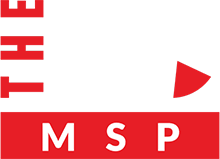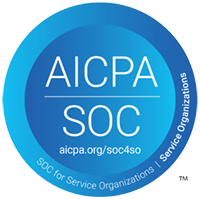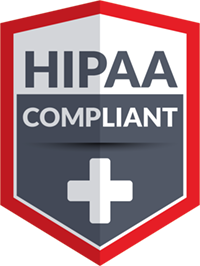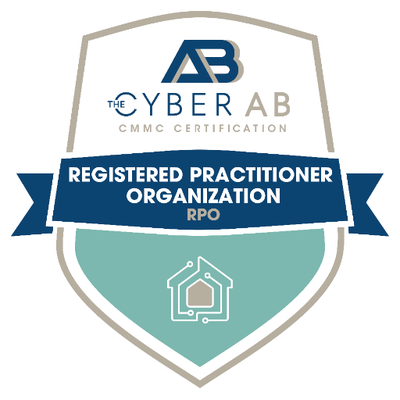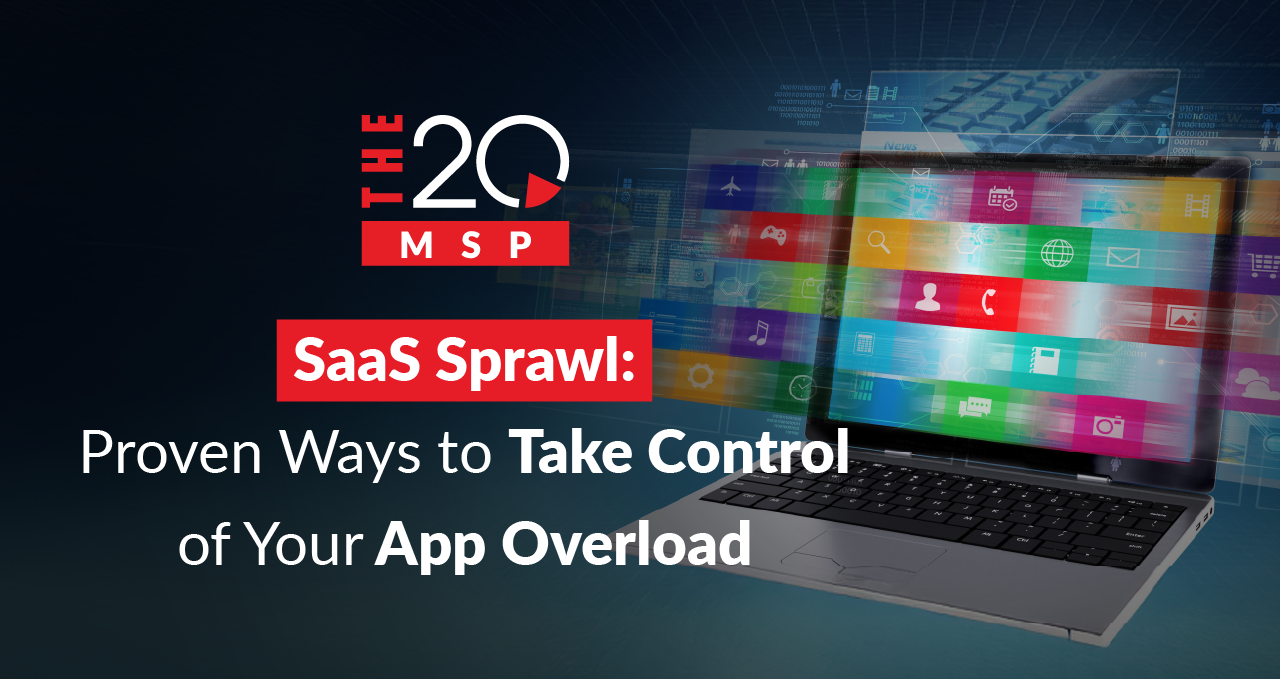
SaaS Sprawl: Proven Ways to Take Control of Your App Overload
Subscription bloat is real, folks.
We’ve got subscriptions for favorite shows, our favorite foods – and heck, even our cars now. But do you know where subscriptions are really stacking up?
On our computers.
Just like that streaming service you forgot to cancel, your business could be quietly bleeding money on software no one’s actually using. Sure, subscriptions are convenient, but do you really need all of them?
In this blog, we’re diving into the world of SaaS sprawl: how it sneaks up on you, what it’s costing you, and how to get it under control.
Your SaaS Sprawl
SaaS – short for Software as a Service – has exploded in recent years. Over half of small to medium-sized businesses now use five or more cloud-based apps just to get through the workday. Why? Because they’re convenient, scalable, and often cheaper than old-school software.
Think Microsoft 365, Dropbox, Slack… sound familiar? These tools are great, but they start to pile up – fast. There’s even a name for it: SaaS Sprawl
And it’s exactly what it sounds like: too many SaaS apps, not enough oversight. Many businesses don’t realize they’ve got a problem until they’re already wasting time, money, and exposing themselves to security risks.
SaaS sprawl isn’t a one-time mistake – it creeps in over time, usually thanks to things like:
Rogue Purchases (a.k.a. Shadow IT)
When you need an app now, SaaS vendors make it easy – just swipe a credit card and you’re in. The problem? IT might not ever know an employee has made the purchase. That means potential overlap with existing tools, and worse – unsecured software flying under the radar.
This isn’t just a weight on your company’s wallet, but a serious security concern (more on this shortly).
Redundant Tools
Let’s be honest: Slack and Teams? Dropbox and Google Drive? They’re not that different. Sure, they’ve got their idiosyncrasies, but the general gist is the same: collaboration and storage. And paying for both usually means you’re doubling up on features and wasting cash.
Forgotten “Free” Trials
One week, 14 days, a full month – they’re all free…until they’re not.
Sure, it might make sense to grab a free trial for a one-time need, but if you’re not keeping tabs on what your team signs up for, those “free” tools can quietly turn into paid subscriptions – and you won’t notice until the bill hits.
Software That’s Overstayed Its Welcome
Needs change. People leave. But SaaS subscriptions? They just keep on renewing.
If an employee is no longer with the company – or no longer using the tool – they might still have an active, auto-renewing license. That’s money out the door for zero return.
Why SaaS Sprawl Is More Than Just a Budget Problem
Sure, the cost adds up – but SaaS sprawl also opens the doors to serious security risks and compliance headaches.
Misconfigurations
Not every app is plug-and-play. When employees set up tools on their own, they might skip security steps, mismanage permissions, or expose sensitive data. Multiply that across dozens of tools, and you’ve got a security mess.
For example, in 2022, Australian telecoms company Optus suffered a massive data breach after a
misconfiguration in their cloud environment. with attackers demanding $1 million in ransom.
Don’t let just anyone install apps. One misconfiguration, and it could be game over.
Unpatched Software
Old or abandoned apps rarely get updated – and outdated software means vulnerabilities. It’s like leaving the back door wide open and hoping no one notices. All it takes is one unpatched app to compromise your entire network – especially if IT doesn’t even know it exists.
Compliance Nightmares
Not all SaaS apps follow the same regulatory standards. In highly regulated industries, an unauthorized download could put you out of compliance – or worse, land you in legal trouble. Most users don’t think about that when they hit “install.”
And while SaaS compliance guidelines exist, there is no guarantee the vendor is actually following them. If you’re not vetting what gets added to your network, you’re taking a big risk.
Want a deeper dive into the risks? Check out our post on 5 SaaS Security Risks You Need to Know.
How to Shrink Your SaaS Sprawl
Ready to rein it in? Here’s where to start:
1. Identify What You’re Paying For
The first step? Know what’s in the books. Audit your expenses, talk to your employees, or use SaaS discovery tools to get a clear picture of what you’re actually subscribed to – and what’s just collecting digital dust.
2. Check In with Your Departments
Loop in your department heads. Ask what tools their teams are actively using and what’s sitting unused. You’ll likely find a few subscriptions no one even remembers signing up for.
3. Train your employees
Help your team get more out of the tools they already have. Sometimes, folks request new software because they don’t realize the solutions is already built into something they use every day – check out our post on M365 apps for a great example of getting more out of what you already have.
Also, make sure they know the right way to request new software. Fewer rogue installs = fewer surprises.
4. Partner With an MSP
Managed Service Providers (like us) can help you with your SaaS sprawl. We use helpful SaaS management tools, keep unnecessary software from being installed, and improve security, all while keeping it inside your budget – and that’s just the beginning.
Planning Ahead: Long-Term SaaS Management With an MSP
Once you’ve cleaned up your SaaS sprawl, the last thing you want is to slip back into old habits. That’s where an MSP really shines – keeping things streamlined, secure, and efficient for the long haul.
MSPs bring structure and strategy to your software environment. They’ll implement SaaS management tools that give you full visibility into what apps are being used, by whom, how often, and at what cost.
For example: let’s say your marketing team is paying for five different design tools. A SaaS management platform might show you that only two of those tools are being used. The rest? Sitting idle. That’s an opportunity to cut costs.
Regular audits are another big piece of the puzzle. While frequent audits may be tough for a small to medium-sized business to handle alone, an MSP has the capacity and expertise to make them part of routine operations – resulting in fewer surprises, less waste, and more accountability.
They’ll also help you build a solid SaaS governance policy</strong – essentially a rulebook for how new software gets introduced. Who approves the purchase of new software? Who pays for it? Who owns the licenses? Get those answers upfront to avoid chaos later.
Finally, MSPs can enforce role-based access controls and authentication policies so only authorized users can install or purchase new tools. This means no more rogue installations or accidental purchases.
With the right MSP, SaaS sprawl doesn’t have to be a recurring problem – it becomes just another part of your routine maintenance.
Make Your Sprawl Small
SaaS apps are supposed to make your life easier – not drain your budget and open security risks.
By partnering with an MSP, you can help shrink your sprawl to a manageable size – and keep it that way.
Don’t let the convenience of SaaS fool you. These are real apps with real costs and real risks. Make sure your team knows what’s already available before they hit “Subscribe Now” on the next shiny tool.
And if you need a hand cutting through the clutter, give us a call. We’ll help you get your SaaS under control – no problem.
About The 20 MSP
As a leading provider of managed IT services, The 20 MSP serves thousands of businesses nationwide, including single and multi-location organizations, delivering white-glove service, secure and streamlined IT infrastructure, and 24/7/365 support. We believe in building lasting relationships with clients founded on trust, communication, and the delivery of high-value services for a fair and predictable price. Our client’s success is our success, and we are committed to helping each and every organization we serve leverage technology to secure a competitive advantage and achieve new growth.
